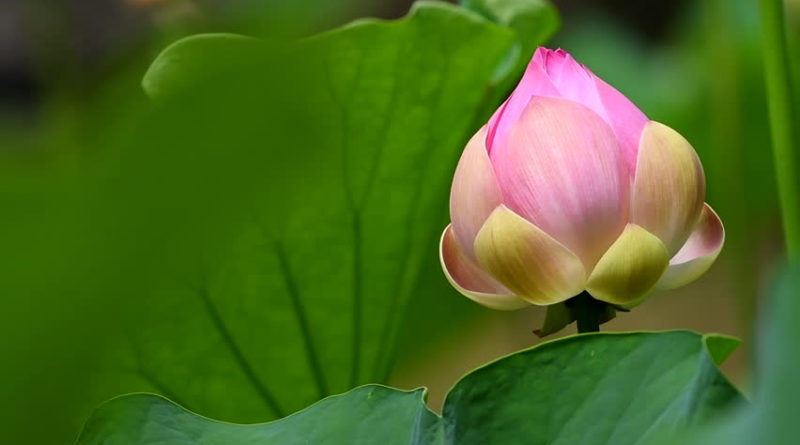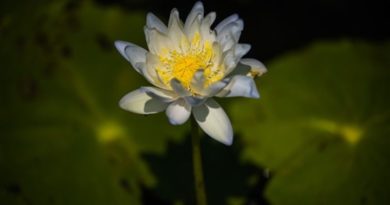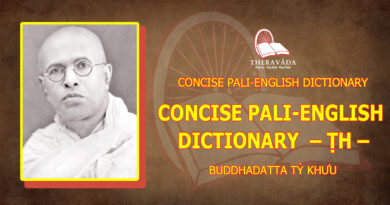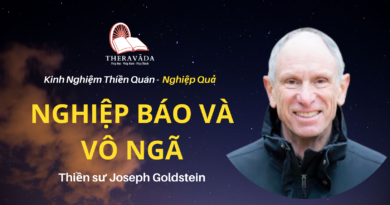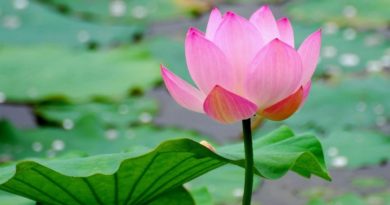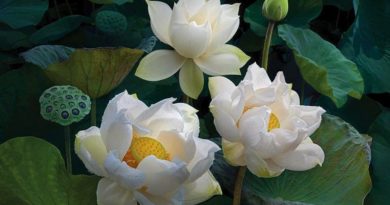A DISCOURSE ON THE ABODE OF THE NOBLE ONES – ILL-WILL, THE SECOND HINDRANCE AND OTHERS
A DISCOURSE ON THE ABODE OF THE NOBLE ONES – ILL-WILL, THE SECOND HINDRANCE AND OTHERS
Ill-will (vyaapaada) is the second hindrance on the holy path. It is like a disease that creates a distaste for good food and makes the sick man listless and apathetic. Ill-will makes us irritable, bad-tempered and suspicious. We do not trust even our friend who is on good terms with the man we dislike. A man who has ill-will should regard himself as suffering from a disease. Unless it is treated promptly, it may gain ground and lead to death. Likewise the effect of unrestrained ill-will may be disastrous as is evident in the newspaper reports of violent crimes.
Some people may appear to have good-will as long as they find everything agreeable, but anything that they dislike usually leads to outburst of bad temper. The Buddhist scriptures cite the story of Vedehika, a housewife who was noted for her affable manners. Her slave-girl had misgvings, however, and so one day in order to test her mistress she purposely got up late from bed. Then the woman flew into a rage and showed her true character.
Ill-will is the root-cause of discord, friction, quarrel, and unhappiness among mankind. We tend to have ill-will against our relatives, co-workers, neighbours, etc. and yet these are the very people on whom we have to rely for help in times of trouble.
So in order to ensure unity, harmony and mutual understanding, we should keep off the disease of ill-will. If the disease infects us, it should be promptly treated. When you become angry, note your anger mentally and do away with it. You should not let it affect your speech and behaviour. You should not utter more than one or two words in a fit of temper.
The third hindrance on the path is sloth or laziness a lazy man does not seek to understand the Dhamma or to practise it. So he fails to make any spiritual progress and misses the insight-knowledge attained by the yogis who practise meditation vigorously. He does not even have any of the ecstasy that occurs to the meditating yogis. Of course ecstasy is not to be confused with the goal of meditation that transcends all varieties of experience in life. But the unique experience of insight-knowledge is not for lazy people.
The fourth hindrance is restlessness and worry (uddhacca kukkucca). Here restlessness means mindwandering while by worry we are to understand remorse over the mistakes we have made. Both these mental states should be removed since they form an obstacle to progress on the holy path.
The last hindrance is doubt (vicikicchaa). It is doubt about the Buddha, the Dhamma and the Sangha. A man who has much doubt usually hesitates and wavers so much that he does not accomplish anything. He may come to grief as do some people who do not act decisively in important matters. Opposed to doubt is faith which makes a yogi follow the instruction of his teacher that accords with Buddha-dhamma.
The yogi can contemplate any one of the five khandhas or the five groups of psychophysical elements comprising a human being. But it is better to start with the contemplation of the rising and falling of the belly. Both the rising and the falling indicate the element of motion. Motion or wind (vaayo) is one of the four primary elements. According to the commentaries, those who have not achieved tranquility (samatha) should begin with the four primary elements whereas the yogi in a tranquil state of mind can begin with (jhaanic) entranced consciousness. The other three primary elements are the quality of hardness (pathavii), the quality of heat, cold or warmth (tejo) and the quality of liquidity or wetness (aapo).
We should begin meditation with what is obvious and easy. The Buddha himself pointed out a very easy method of meditation, viz., the contemplation of the four bodily posture. He told his disciples to be mindful of what they are doing. This advice is so easy to follow that some people do not take it seriously. They argue that since it makes no mention of (naamaruupa) etc, it has nothing to do with ultimate reality.
In one of his books Ledi Sayadaw says: “When you walk, you should focus on every step that you take.” This accords with the teaching of the Buddha: ‘When you walk, you should know that you are walking.” Although you merely note “walking”, you will realize, as your power of concentration develops, that the movement of the body is due to mind’s desire.
You should also observe physical changes such as the rising and falling of the belly which can be clearly and easily noted. Some people have doubt about this practice. This is due to their lack of experience that corresponds to what their teachers have told them about the distinction between mind and body, the meanings of anicca, dukkha, etc. Lack of experience leads to doubt which forms one of the five hindrances.
The hindrances prevent good thoughts form arising. Good thoughts and evil thoughts do not occur together. You have goo, wholesome thoughts when you are mindful, and bad, unwholesome thoughts when you are unmindful. Unmindfulness is largely due to hindrance and so those who practise meditation are likely to be distracted by doubt, worry, desire and so forth. Some people do not wish to meditate because they count on their acts of alms-giving, observance of moral precepts and recitation of scriptures, etc., for the purity of their mind. But they are quickly disillusioned when they take up meditation for then they find themselves harassed by impure thoughts.
An unmindful person cannot make himself morally pure for he is never aware of the true moral character of his thoughts. Sensuous desires, hatred, ill-will, etc., escape his notice. It is only through meditation that we can know whether the mind is pure or not, whether or not it is free from anger, greed, etc. Repeated introspection helps to purge the mind of its impurities.
You have impurity of mind, when you are mindful. It is a mistake to think that one can attain it only when one enters trance (jhaana). Purity of mind based on jhaana is due to the continuous stream of jhaanic consciousness. Purity of mind through meditation is the purity that emerges at the moment of attaining insight. Both kind of consciousness are alike in respect of purity of mind and freedom from hindrances.
Our method of meditation begins with the practice of keeping the mind on the rising and falling of the belly. It accords with the Buddha’s teaching: “Rising refers to the physical or material khandhaa. Vaayodhaatu (element) is involoved in the material khandhaa and the characteristic mark of this element is strengthening.” In the contemplation of mind and body, quantity and shape do not matter. Some yogis seek to focus on what they believe to be the combination of atomic particles in some shape. Shape is possessed only by the objects which have colour or which can be touched.

